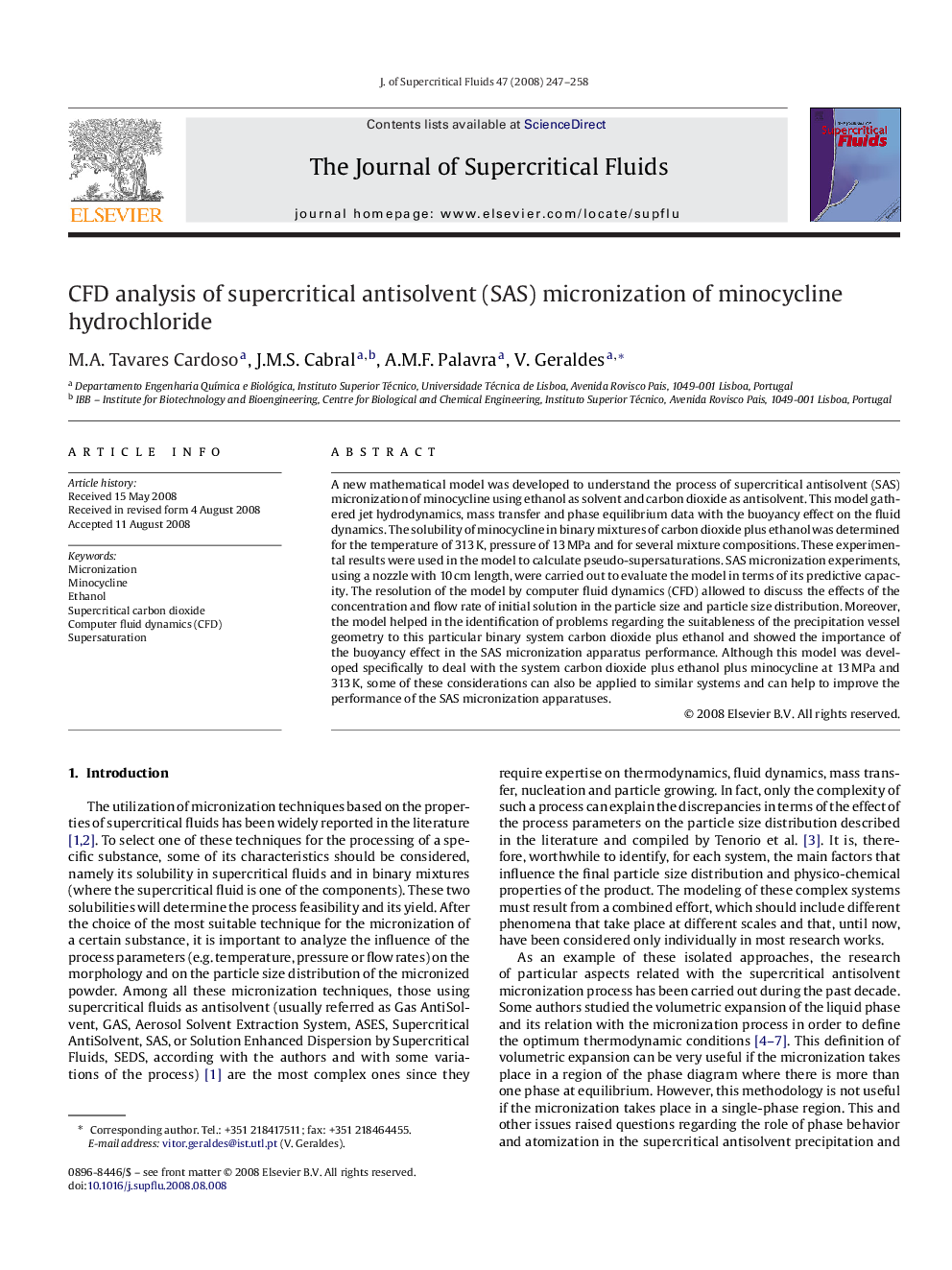| Article ID | Journal | Published Year | Pages | File Type |
|---|---|---|---|---|
| 231812 | The Journal of Supercritical Fluids | 2008 | 12 Pages |
A new mathematical model was developed to understand the process of supercritical antisolvent (SAS) micronization of minocycline using ethanol as solvent and carbon dioxide as antisolvent. This model gathered jet hydrodynamics, mass transfer and phase equilibrium data with the buoyancy effect on the fluid dynamics. The solubility of minocycline in binary mixtures of carbon dioxide plus ethanol was determined for the temperature of 313 K, pressure of 13 MPa and for several mixture compositions. These experimental results were used in the model to calculate pseudo-supersaturations. SAS micronization experiments, using a nozzle with 10 cm length, were carried out to evaluate the model in terms of its predictive capacity. The resolution of the model by computer fluid dynamics (CFD) allowed to discuss the effects of the concentration and flow rate of initial solution in the particle size and particle size distribution. Moreover, the model helped in the identification of problems regarding the suitableness of the precipitation vessel geometry to this particular binary system carbon dioxide plus ethanol and showed the importance of the buoyancy effect in the SAS micronization apparatus performance. Although this model was developed specifically to deal with the system carbon dioxide plus ethanol plus minocycline at 13 MPa and 313 K, some of these considerations can also be applied to similar systems and can help to improve the performance of the SAS micronization apparatuses.
Graphical abstractA new mathematical model was developed to understand the SAS micronization process of minocycline. This model gathered jet hydrodynamics, mass transfer and phase equilibrium data with the buoyancy effect on the fluid dynamics. The model helped in the identification of problems regarding the suitableness of the precipitation vessel geometry and showed the importance of the buoyancy effect in the SAS micronization apparatus performance.Figure optionsDownload full-size imageDownload as PowerPoint slide
